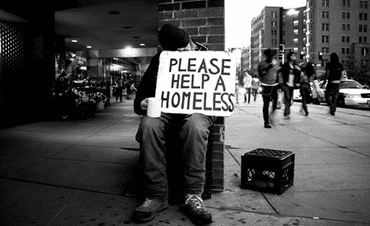I. Leveraging the Concept of Sacred Space reFocuses a Socio-Rhetorical Interpretation In order to hear more effectively Paul’s Ephesians 3:14–19 prayer, a socio-rhetorical approach can aid the reader in the listening process. The goal here is to recognize that the original audience had experienced life in time and space, which promoted habits and beliefs that developed their social reality different from our own. This approach assumes a tapestry of “cultural textures” have been interwoven into the text of Ephesians.[1] Such an interpretative tactic allows the socio-cultural location in Ephesus et al. and, as well, their habits and beliefs—namely, the cultural, social and habitual background noise of their daily lives—to help us hear how the original readers would have heard what we are now reading in Paul’s Ephesians 3 prayer. The nature of Paul’s style and his identification of the church in Ephesus as God’s household-temple (Ephesians 2:18–22) will be explored, which will also help focus our potential interpretation of his phrase in Ephesians 3:16, the “inner man.”
Witherington further identifies Ephesians as “epideictic rhetoric,” a style that displays dramatic tones that would have been appropriate for a document intended to provoke an attitude of worship, giving a heightened liturgical imagination to its hearers/readers designed to produce a community-centered response. Although “epideictic rhetoric” typically did not call for a specific action, Paul, nonetheless, harnesses this style to “enhance knowledge, understanding, or belief”[6] in what God in Messiah Jesus has done on behalf, in the midst of, and through the “the saints who are at Ephesus” (1:1). The style and content of Ephesians 1-3 seem to focus our attention in just this direction. The “epideictic rhetoric” can clearly be seen in the two Ephesian prayers (1:15–23; 3:14–19), the second of which (3:14–19) contains our text under consideration (3:16c). Paul offers these prayers on behalf of the church in the greater Ephesus area, each provoking a heightened imagination of God’s action in Messiah toward the house-churches (cf. 3:20–21). Paul prays that God would increase their comprehension of God’s action and what it does in and through them as household-gathered-churches. The prayers are self-actualizing and actually fulfills what is requested of God on behalf of the Ephesus church—the prayer is initially answered as the believing community hears the words of Paul’s petition. He beseeches God to open their hearts as a local[7] believing community so that they would expand and enhance their knowledge and experience of God’s powerful work in Messiah Jesus. The stacking and enhanced language and imagery not only fits the temple worship experience formerly encountered by the Ephesus believers, it also gives an enhanced imagery for the new house-churches, who, as they are gathered, are God’s fullness (1:23) and temple-house (2:19–22) in Ephesus et al. (The new temple in town!) And, although often taken and preached individualistically (i.e., to the believer), the culminating verses of this highly liturgically charged and lofty worship section (1:3-3:19) has a benedictory call addressed to the whole of the church in Ephesus. Now to Him who is able to do far more abundantly beyond all that we [that is, the church, the one new man; cf. 2:15ff.] ask or think, according to the power that works [which is the content of the two prayers, the resurrected and ascended Messiah] among us [en humin, among us, i.e., the one new man], to Him be the glory in the church and in Christ Jesus to all generations forever and ever. Amen (3:20–21) In other words Paul’s prayer is: “may the essence and benefits described in this homily (in 1:3-3:19) effectually become a reality for the gathered-church in this place, for all generations; may what God has brought about through his actions in the death and resurrection of Messiah Jesus become the belief and action among and through the (local) church, His body, which is his fullness (cf. 1:23; 3:19).” These prayers, which take up a rather large of amount of word count in the first three chapters of Ephesians, “are acts of praise and adoration [themselves], even though they include petitions on behalf of the audience.”[8] The requests (themselves) are to lift the congregation as a whole, who is God’s temple in Ephesus et al., into the realm of reality that reflects what Paul has written already in 1:3–14 as well as 1:15–23 and 3:1–13. The rhetorical function of the paragraph, 3:14–19, with its doxology and benedictory call that follows (vv. 21–22), is to enlarge the vision of the congregation as agathered-church in that place, God’s temple-house in Ephesus et al.[9] The “epideictic rhetoric” is being used to arouse the emotions, pulling on the collective congregational imagination, the realization of what it means to be seated with Messiah Jesus in the heavenly places (2:5; 3:10), to be God’s fullness in Christ, that is conveyors, illustrators, a display of God’s mystery (1:23; 3:10) as a gathered-house-temple-church in that place. Paul uses this sacred-space and enhanced, liturgically-charged and hierophantic prayer to mold, corporately, the “saints who are at Ephesus” to recognize their own relationship (as a bound together social group, i.e., a church) is how God is revealing the gospel (Eph 3:6). Sacred space implies the stylistically veiled polemic target. The lack of an obvious polemical target in Ephesians suggests to many that the Letter is universal in nature, focusing on the “invisible” church. However, perhaps we should look in a different direction (i.e., listen differently) for Paul’s purpose. As Paul has highlighted in chapter 2, the Gentile believers are to understand a new identity apart from their former temple-life and the powers associated with those temples (cf. 2:1–11) and are, now, to conform to a new identity as the household-temple in the Lord (cf. 2:11–12; 4:17–32). In Ephesians 2, the Gentile audience is first reminded of their former “deadness” as they once walked (i.e., lived) according to the evil powers of creation (2:1–3), which was learned and expressed by their former temple-life, and, second, to grasp their new standing in “the heavenlies” in Messiah (v. 6). Now, “the saints who are at Ephesus” are to rethink everything as God’s new creation, the one new man (2:15c), God’s new humanity, his temple-household (2:19–22). The church, with the Gentiles, has become God’s sacred space throughout Asia Minor.
Paul’s temple referent as sacred space (in Ephesus) is significant to any discussion for both the topic of ecclesiology (i.e., the nature of the church) and for church growth; first, because of the nature of sacred space itself and, second, because Paul harnesses the imagery to portray the church as growing.[11] The temple reference and imagery suggests an important interpretative hermeneutic within Ephesians itself. In the ancient Mediterranean world and cultures, temples were at the very center of everyday life defining reality—socially, politically, religiously, and for defining and understanding of humanity (including personhood), making it very difficult to divide these categories in the life of people. This was true of the pagan cult-temples and, as well, true for Israel through their Solomonic temple experience. As the gospel moved into Gentile territory, and specifically within non-Jewish communities outside the life of a synagogue, it would be necessary for both the Gentile and the Jewish believer to understand their new orientation for life and humanity (cf. Eph 2:11–22; 3:1–6).
Footnotes
[1] I.e., an approach to reading literature that focuses on values, social-worldviews, and beliefs in the texts; reading texts as performances relevant to its particular historical and cultural social-location; it presupposes that a text is a tapestry of interwoven textures, social, cultural, ideological, sacred texture. This fits well with how Paul writes and the word choices he made in the Ephesian Letter. [2] This in no way means the Letter is less polemical in desired outcome; the question would be, then, how does the rather non-polemical style act as a polemic against any perceived opposition, obstacles, or barriers to the gospel of Messiah Jesus? The remaining section will offer a potential answer to this question. [3] Ben Witherington, The Letters to Philemon, the Colossians, and the Ephesians: A Socio-Rhetorical Commentary on the Captivity Epistles (Grand Rapids: Eerdmans, 2007), 4; refers to G.A. Kennedy, New Testament Interpretation through Rhetorical Criticism (Chapel Hill: University of North Carolina Press, 1984), 32; B. Reicke calls it “Asianism.” (“It was called ‘Asian’ style because its foremost representatives came from Asia Minor, and it was characterized by a loaded, verbose, high-sounding manner of expression leaning toward the novel and bizarre, and careless about violating classic ideals of simplicity. . . Our epistle was undoubtedly written in conformity with the rules of the Asian school which was still important during the first Christian century”). [4] Witherington, The Letters, 4. [5] For the inappropriate leveraging of application to determine interpretation, see chapter 6 of my Wasted Evangelism: Social Action and the Church’s Task of Evangelism (Wipf & Stock, 2013). [6] Witherington, The Letters, 7. [7] Although most take Ephesians as a sermonic Epistle concerning the universal church (i.e., the “invisible” church), it seems more likely that Paul’s intended audience is the household churches gathered throughout Asia Minor. What we refer to as The Letter to the Ephesians was meant to be circulatory, meaning it was to be read elsewhere, which seems what is to be inferred by the reference in Colossians 4:16 that the Colossian Letter was to be read elsewhere as well as the Letter coming from Laodicea (cf. Col 2:1, 13, 15). Additionally, as will be discussed later in the article, there is no reason to think the Letter’s polemic can not be addressing specific churches in Asia Minor, i.e., Ephesus et al., rather than some ambiguous concept of a invisible, universal church. [8] Witherington, The Letters, 270. [9] Ibid., 270. [10] Perhaps we should read the Ephesians 4 “leadership list” in light of this as well. [11] I had thought the images, descriptions, and teaching Paul renders on “the Church” in Ephesians was intentionally universal in nature—that is, “the Church” capital “C” in Ephesians is about the universal church as opposed to being about the or a church (small “c”) local. I believe I was incorrect on this. As Paul starts the letter he wrote, “To the saints who are at Ephesus” (1:1), making it local. While I grant the circulatory nature of this Letter (i.e., to the churches of Asia Minor, and is probably the Letter referenced in Colossians as “the letter from Laodicea,” 4:16), the Letter known to us as Ephesians is about the local church at least, the community of believers in a local area (geographic and municipal in make up). I believe this shift has implications for defining biblical church growth.
0 Comments
 Typically, church growth outcomes are limited to numbers of people indicated by an increased averaged attendance at one specific type of event (i.e., a weekly worship service) in one room (i.e., the “sanctuary” or space where a weekly worship service is held) at a particular addressed-place or tallied as increased paper membership at an annual congregational meeting. This is a building-centered form of church growth, which is foreign to the concept of “church” in the New Testament. On the other hand, Paul’s Letter to the Ephesians imagines believers “growing into a holy temple in the Lord” that forms “a dwelling of God in the Spirit” (2:21–22). The habits and experience of most who attend a building-centered church seem to focus on the individual Christian: sermons target those in the pew with generalized easy-to-make individualized application; the style and design of the service focuses on an audience of one to ensure faithful attendance; and, programs and activities are developed to meet personal needs. Furthermore, most building-centered churches are neighborhood-less, disconnected from the built space of the addressed-church building. By design or default, the building-centered experience is designed to move people away from their respective neighborhoods in order to develop and isolate the building-centered church community—again, separated from its built environment; programs and activities are designed to keep people returning to the “building.” However on the other hand, Paul’s reference to “the inner man” (Eph 3:16c) and the very temple background reverberating throughout Ephesians, as well as, the immediate context (i.e., Eph 3:1–13, 14–19, also 20–21) focuses us, the reader/hearer, on the importance of rethinking “church” and helps to establish a biblical understanding of church as sacred space. This essay seeks to establish Paul’s “inner man” (3:16c) as a corporate temple reference (befitting the context) and as an allusion to back to the Ephesians 2:15c “one new man,” that is God’s growing church-temple. This essay offers a corporate reading of Paul’s Ephesian 3:16 “inner man” reference, which reinforces the gathered-temple-church, the one new man, as sacred space, the liminal space space between (the heavenlies and a local neighborhood, let's say); and, as such, the local temple-church has revelatory significance for disclosing the wisdom and mysteries of God (cf. 3:8–10). This implies that church growth outcomes go (far) beyond mere numbers of people and may include, as the antecedent one new man suggests, social, demographic, and justice outcomes as well. The ensuing study will develop this thesis (I) through leveraging the concept of sacred space as a socio-rhetorical interpretive-model; (II) by weighing the context to determine a “corporate” or “individual” reading of Paul’s use of “inner man” in Ephesians 3:16; (III) by showing that Solomon’s temple dedication and other Old Testament temple texts have implications for a corporate reading of Paul’s “inner man” reference; (IV) by summarizing how a corporate reading “inner man” that denotes the revelatory nature of the temple-church; and, (V) by presenting a list of inferred outcome relevant to church growth.
#churchmatters: Gathered believers are sacred space (not the room or building they meet in)5/27/2019  “The church (read a gathered-church) does not need a ‘sacred place’ to worship, have fellowship, and to offer (apostolic) instruction–three things the apostolic and early church would not have separated–for those gathered are the sacred space. In fact, the local gathered-church is the liminal space between the heavenly places and earth; the human beings, who have gathered together, are the most sacred space, the holy of holies as it were (literally), in all of creation at that moment; they are, not the space or place, the address, they occupy, the temple of the Most High, the Creator God of all creation; they are the mystical, yet visible body of Christ, that is, the presence of God in Christ on earth, right there, because their ascended Head, Messiah Jesus, is now seated at the right hand of God in the heavenly places and they, these gathered believers are His body” (CMA). Church matters (#churchmatters)
 Among most protestant, evangelical churches we say our worship isn't mediated via a priestly order or professional; but isn't that really how, for the most part, congregations experience worship? The original New Testament church and on into the first 150 or so years met in homes and worshipped around a regular household meal, which helped promote, facilitate, maintain a connection between faith and life as a whole. A separated worship began the process and habits that produced a dualistic spirituality in our faith—one for Sunday and one for the “real world.” When the building (a building) is considered the liminal* space between God and people, a dualistic religious experience is established and maintained through continued use and habits associated with the building (a building). In other words, “Church is conceived as a sacred space; the ethereal architecture, lighting, music, rituals, religious language, and culture all collaborate to make this a sacred event not experienced elsewhere in life in quite the same way” (Alan Hirsch, The Forgotten Ways, p. 103).
Of course, there was a progression and a modification of household worship over the first 150 to 300 years of the early church. But it was Caesar, Constantine specifically, that gave us our start in church as building, away from households. He, not only designed the first separated and built churches, he ordered and approved a professional clergy-class to maintain Christianity under Caesar, and, even, made heresy punishable by the state. Later, under emperor Theodosius such Constantinianism church-forms were strengthened and codified, creating a church culture apart from the text of the New Testament and apart from the household, setting a course for developing a corpus Christianum that affirmed the church’s place under the emperor, and declaring Sunday as the official day of religious “church” observance with obligatory attendance and, as well, punishment for noncompliance. Most of what we see, experience, and affirm in our church experience is a long by-product of Constantine and the long-standing power invested in a professional clergy class. For sure, there are positive benefits for such a clergy, that is the maintaining and protection of the gospel itself and for preserving a tradition; yet, as in all social experience wherein a guardian class is created (or needed), power becomes the necessarily element in maintaining its (understanding of) purity and rightful inheritance. And, at least in part, the building-centered system we have is a means to protect the rightful inheritors of ecclesiastical power. This, then, becomes part of the building-centered church experience for the congregation, further teaching by habits and world (i.e.,religious) view a dualistic spirituality that separates the sacred from the secular.
When we, that is leaders of the church, are puzzled over, saddened by, and, in too many cases, judgmental of lay-Christians who do not apply or live out their faith in the ordinary, profane, and mundane life outside of “church,” we should not be surprised, for we have taught them to live and experience their faith in this way. When we, by affirmation and by our habits, designate a building as liminal sacred space rather than, as it seems, God's people are now to be such sacred space, we teach our congregations to have a dualistic faith.
*Liminal, that moment or space between earth and heaven, the entrance or threshold between the ordinary or profane and religious or sacred. The local church as the “thin place” and “the space between”: “Thin place,” a sacred place or space where unseen mysteries of the other world (i.e., “the heavenlies”) and the material places of the earth touch. A “thin place” is where one can walk in two worlds at the same time, a place of liminality—a place where the two worlds (seen and unseen) are fused or mingled together, yet where distinctions can be discerned. “A thin place” is where the boundary between heaven and earth is especially narrow, a place where a sense of the divine is more readily perceived. The church (a local church) as God’s household-temple is such a “thin place.” The “space between” is the common or transitional space where boundaries are fluid, a mix of human activity, specifically that space between the build environment. The church (a local church) is such a “space between” [from C. M. Anderson, “The Sacred “Thin” Space Between: (Eph 3:16): The Temple- Church as Revelation of God's Reconciling Mystery and Its Potential for Church Growth Outcomes” (paper)].
*This is the third instalment of quotes from my presentation on "Church (local), the poor and their neighborhood," which are focused on applying the Bible, especially in the context of "neighborhood." For all the posted "Church (local) quotes >>
The ecclesiastical and liturgical changes that developed at the move from domestic-center church to building-centered church set the Christian community on social mapping trajectories that have affected, not only views on the role of women in the church, but how we also define and understand church growth outputs and outcomes. The distinct change from domestic space with more informal domestic relationship oriented habits and associations to a more formal institutionalized ecclesiastical space has, over two plus millennia, created specific social ramifications for the church and for doing church. And, as well, this has influenced what we consider acceptable church growth texts. We should not underestimate the power of a building as “a church.” As Jeanne Halgren Kilde reminds us, the “material world is far from neutral,” nor is a “church building” any less neutral [Sacred Power, Sacred Space: An Introduction to Christian Architecture and Worship, 199]. Although reflecting on earlier church history, yet still valid to our contemporary building-centered church, Kilde continues, “Christian space is dynamic space. It is powerful space” [199]. The power of sacred space, including a building designated as “a church,” changes everything. Power shifts. Sustainability becomes necessary. Maintaining approved and acceptable hierarchies become absolute. Habits associated with the use of a “sacred” building and the division it makes with everyday life orients our social mapping. A building-centered church experience is not nuetral to the church’s associations and human relationships in and outside the church community (i.e., a local church community). The use of building-centered sacred space as church is a language itself, a specific “god-talk” that that creates a separation from other non-sacred church space, reinforcing a incongruence, a cleavage between everyday life and, also, a barrier between human and human social mapping (or a redefining of social mapping). The shift to now long entrenched habits and meaning associated with building-centered, addressed sacred space made with human hands known as “a church” has provided an interpretive lens for reading the New Testament. The question is not whether we should have specific buildings as centers of “church” activities, but how such building-centered church experiences influence and mold both our interpretation of biblical texts and our understanding of church—and thus, form our parameters for church growth. Interestingly, the Ephesians household code suggests how “members” are understood as persons, and in doing so, there is potential to move beyond mere numbers of people as the only outcome for church growth. *For those following my thoughts on "Church Growth" as I prepare a paper for the upcoming November 2015 annual meeting of the Evangelical Theological Society in Atlanta. This portion comes from the paper entitled, "Domesticating Church Growth (Eph 5:18-6:9): The Spirit-Filled Temple-Church Architecture (Wives-Husbands/Children-Fathers/Slaves-Masters) and Outcomes of Personhood."
Other Not by the Numbers posts >> |
AuthorChip M. Anderson, advocate for biblical social action; pastor of an urban church plant in the Hill neighborhood of New Haven, CT; husband, father, author, former Greek & NT professor; and, 19 years involved with social action. Archives
February 2024
Categories
All
|
Pages |
More Pages |
|




 RSS Feed
RSS Feed